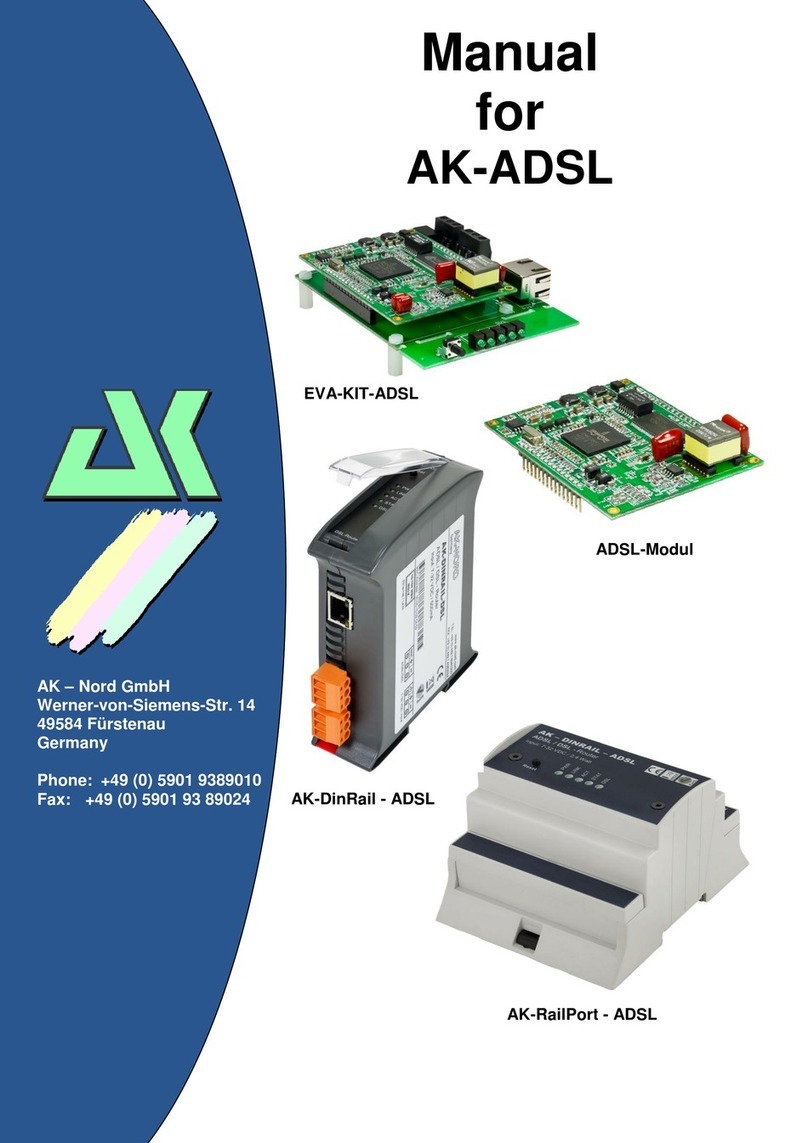
I2C
Indeed it is only possible to operate one I2C interface in the master mode; however it is possible to
control it via two different ports with e.g. different addresses. A data mode had also been
implemented in order to achieve a maximum of flexibility. The interface can be individually set and
it is possible to transfer data rates of up to 400.000 bits/sec. Furthermore, it is possible to
additionally set emulations such as modem, AutoConnect, Conntect-On-Data, TCP/UDP-Client
with up to 10 parallel connections, TCP/UDP server, E-Mail Client with sending and receiving of e-
mails.
SPI
It is possible to use up to 2 independently operating SPI interfaces in the master or slave mode.
Each interface can be individually set and it is possible to transfer data rates of up to 25.000.000
bits. Furthermore, it is possible to additionally set emulations such as AutoConnect, Conntect-On-
Data, TCP/UDP-Client with up to 10 parallel connections, TCP/UDP server, E-Mail-Client with
sending and receiving of e-mails.
By the setting in the Setup, the SPI interface can directly operate SD cards, DF cards or Data-
Flash components. An implemented Flash-File system with FAT16 structure support the FTP
server in order to save data on it or to read data from it. Now it is possible to save own homepages
or JAVA – Applets in order to present a proper and individual look to the customers via the WEB
server.
SD-Cards / DF-Cards:
- FAT12/16/32
- PC-compatible
Serial-Flash components:
- AT45DB011B, AT45DB021B, AT45DB041B,
AT45DB081B, AT45DB0161B, AT45DB0321B
AT45DB0642, AT45DB1282
- SST25VF016B, SST25VF032B, SST25VF064C
SST26VF016B, SST26VF032B, SST26VF064B,
S25FL116K, S25FL132K, S25FL164K,
SST25VF020
will be directly identified.
The SPI interface can also directly control as SPI display, e.g. the EA DOGM162B-A, which you
can directly use via TCP/IP.
TTL IO
It is possible to directly control up to 15 pins via two interfaces. To do so, there is a proper control
mode which can read, switch on or switch off the signals. A tunnel mode allows the automatic
transfer of the signal modes.
Ethernet
It can directly be used without any additional components. RJ45 Connector on board.
MDIX (Automatic cable recognition)
10 Half Duplex
10 Full Duplex
100 Half Duplex
100 Full Duplex
AutoSensing




























